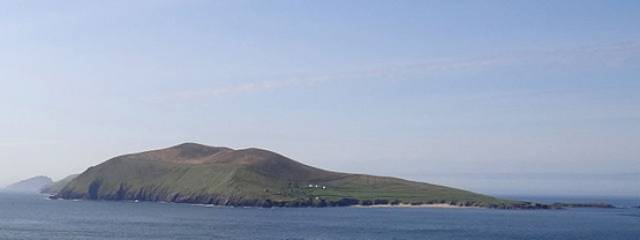#WildAtlanticWay - Minister of State for Tourism Patrick O’Donovan has announced almost €1.125 million in funding from Fáilte Ireland’s Capital Grants Allocation for two key projects along the Wild Atlantic Way.
A grant of is being made available to Galway County Council will receive €896,000 for the Connemara Greenway, while a grant of €225,000 is being allocated to the Office of Public Works (OPW) towards the first phase of development of new visitor facilities on Great Blasket Island.
“I am delighted to announce these grants today as these two important tourism attractions will provide a serious contribution to the future success of the Wild Atlantic Way," said the minister last Wednesday (13 July).
"Tourism moves in a very competitive global market and capital development is one means by which we can ensure that we are fighting fit to win a good portion of overseas visitors and, thereby, gain a return on this investment through increased revenue and jobs regionally.”
The grant for the Connemara Greenway will fund a new section of the route from Cloonbeg to Athry, running adjacent to Ballynahinch Castle, with a view to completion in May 2017.
This development is part of a wider plan for the Clifden to Oughterard Greenway that will link up with the planned Greenway from Galway city to Oughterard – ultimately resulting in a 78km Galway to Clifden Greenway offering a cycling experience from city to coast with international appeal for cycling enthusiasts.
The Blasket Centre, meanwhile, is located on the Wild Atlantic Way at the halfway point of the Slea Head Drive on the Dingle Peninsula. It was developed as a heritage and visitor centre honouring the unique community who lived on the remote Blasket Islands until 1953.
Currently there are no visitor facilities on the island but the new grant will assist the OPW in their overall development of the site by funding new facilities and services on the island, expected to be completed later this summer.
“These grants are an investment in the visitor experience on the ground," said Fáilte Ireland chief executive Shaun Quinn. "While the Wild Atlantic Way has been warmly received at home and abroad, it is still an evolving project. It is vital that we continue to invest in the project to ensure that we open up its full potential.
"We have great natural landscapes along the west coast but we must also ensure that we have top class tourism infrastructure, whether facilities or interpretation, to match them.”
Minister O’Donovan also recently launched a new Fáilte Ireland Grants Scheme for Large Tourism Projects, which will provide a pool of €65 million in investment to develop new, or boost existing, tourism experiences and attractions across Ireland.
The scheme, which will run from 2016-2020, is now open for applications from the public, private and voluntary sectors including community groups. Under the scheme, capital grants in excess of €200,000 and up to a maximum of €5 million will be available.
































































